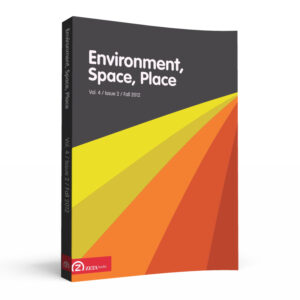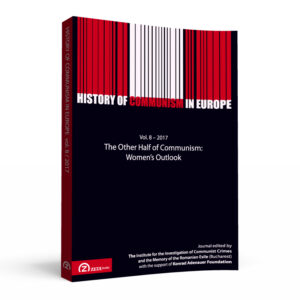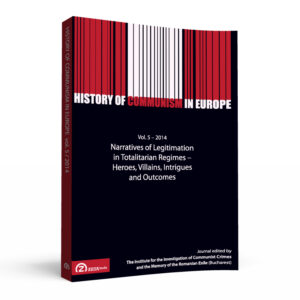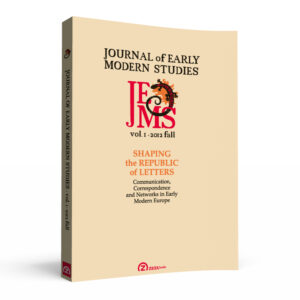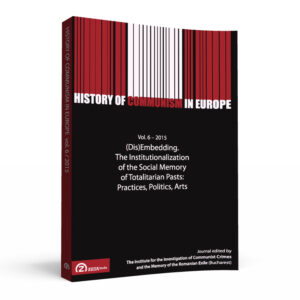CONTENTS
John A. SCOTT: Who’s Where
- ABSTRACT: Central to several current philosophical projects is determining which conversational conventions will best locate and accommodate all the required participants. This article follows Troy Paddock’s lead in exploring a number of conventions currently on offer, particularly Heidegger’s aesthetic nearness-to-hand and Latour’s scientific Actor-Network-Theory. This article also introduces Donald Davidson’s social triangulation as a complementary model of approach: one that implicates propositional agents in potentially revealing relations. It concludes that a close study of implicational, as distinct from inferential, argument and judgment may prove profitable in establishing a secure and productive environment, and may foster the emergence of modeling techniques and metrics that could help in designing such conversations.
Malgorzata A. DERENIOWSKA: Contested Concept of Sustainability: A Consumer Society and Dialectic of Human Desire
- ABSTRACT: This article argues that sustainability is essentially a contested concept that not only cannot be sufficiently defined in a one-for-all blueprint, but requires a new mode of self-actualization of human potential in dialogical, cooperative learning processes. Inherent aporias and their ethical implications are illustrated by an analysis of the mainstream interpretation of the sustainability concept in the context of the relationship between the logic of accumulation and improvement and insatiable human desires as off-springs of a deeper ontological transformation of modernity. A philosophical account of technology and modern science will be introduced in order to investigate overconsumption driven by mimetic desires and the transformative and dialectic dynamics of desire. A contemplative learning model is suggested as a useful basis for a reasonable interpretation of the sustainability concept.
Michael MARDER: On the Mountains, or The Aristocracies of Space
- ABSTRACT: Mountain peaks, like all uninhabitable and barely accessible environments, stand in the way of a clear-cut distinction between “place” and “space.” Building on the environmental thought of Aldo Leopold, as well as the philosophy of Friedrich Nietzsche and twentieth-century phenomenology, I draw attention to this obscure in-between region and argue that the conceptual distinction must be subject to careful adumbration, depending on the concrete place where it is employed. Subsequently, mountains are theorized as the sites of friction between earth and world, where sovereign authority and objectivizing thinking are equally suspended.
Jason P. MATZKE: Walking in Nature: Thoreau’s Local Ambles or Muir’s Wilderness Treks
- ABSTRACT: It has been argued by philosophers and cultural historians that the notion of wilderness as it has been developed in the West problematically separates—conceptually and practically—humans from wild nature. The human/wilderness dichotomy, it is said, potentially leads even well-intentioned, environmentally minded people to work for wilderness preservation at the expense of paying attention to our local, lived environment. Although Henry David Thoreau and John Muir are often taken to be key architects of the inherited notion of wilderness, I draw from their differing descriptions of spending time in wild areas in order to argue that Thoreau provides a view of the human-nature relationship that is not susceptible to this particular worry. Thoreau, much more than Muir, provides us with reasons to not ignore our local lived space in favor of protecting only more wild (i.e., less humanized) places. The contrast between the two does not diminish the value of Muir’s work, but it does remind us that key figures—Thoreau in this case—in the development of the dominant wilderness paradigm should not be set aside as unhelpful in our own efforts to better understand our relationship with local place.
Luis O. ARATA: Modeling Environments Through Narrative
- ABSTRACT: This article examines how narratives mediate human interactions with environments to create a sense of place and identity. We begin with a review of the Greek poem Phaenomena to see how constellations brought a human dimension to the cosmos as well as a sense of predictability. A review of Jean-Paul Sartre’s Nausea illustrates the conception of indifferent space that erases the human presence, and how the imagination comes into play to fill the void. We examine how narratives work to model aspects of environments and draw out meaning where before there was raw substance. Two seminal poems of Baudelaire then present a more subjective modeling of the environment. Pablo Neruda let his poetic vision be reflected in his three homes as protective playgrounds for his imagination. The article concludes that the models we examined are sheltering niches that help us feel at home in the world. As environments turn out to be more interactive, fragile, and complex than previously thought, our narratives also have to reflect on their im-pact on the sense of home they propose.
Scott TATE: Everyday Life, Tinkering, and Full Participation in the Urban Cultural Imaginary
- ABSTRACT: Cities around the globe are immersed in transnational projects of place reconfiguration and attraction. Urban places, intent on competing in the globalized experience-based economy, undertake identity projects—on-going, dynamic processes through which places are produced and reproduced by conscious strategies of place making and identity building (see, for example, Nyseth and Viken 2009). In this article, I employ Henri Lefebvre’s conceptions of a “right to the city” in order to explore the right to full participation in imagining and shaping urban futures. Spatial practices, such as those I term civic tinkering, may offer one way to help enable such imagining. My discussion draws from scholarship on imaginaries and place identity, as well as on my own qualitative field studies conducted in Roanoke, Virginia, in the United States, and Belfast, Northern Ireland in the United Kingdom. While my precise research questions differed in these two sites, I explored, in each instance, the processes of place identification and development centered on arts and culture, and the extent to which marginal groups and their concerns were engaged or considered in such processes. I also explore “tinkering” as a set of activities that hold potential for residents to more fully participate in the urban project by constructing, altering, and disrupting spatial meanings. Tinkering may be any impermanent, unsanctioned, and informal activity endeavoring to positively alter a city’s identity. Henri Lefebvre described the relevance of such practices in his vision of the city as oeuvre, or ongoing project.
Malcolm WOOLLEN: The Stockholm Exhibit 1930: Reinventing the Everyday
- ABSTRACT: This paper attempts to explain how the Stockholm Exhibition of 1930 was uniquely different from previous exhibitions and sought to resolve a longstanding tension between a vision of the future and longing for the past. In particular, it addresses how ideas of the everyday were redirected towards functionalism in a joyful festive context through the agency of consumer desire. It also explains how the exhibition attempted to relate to Skansen, a nearby museum of the Swedish vernacular and how Gunnar Asplund’s concepts of functionalism reflect Heidegger’s principles of dwelling. Finally, using Foucault’s concepts of ‘other’ spaces, it shows how the Stockholm Exhibition served as a heterotopia of the future that collaborated actively with a heterotopia of the past to make a more convincing case to a mass audience about the appropriateness of functionalism in Sweden.


